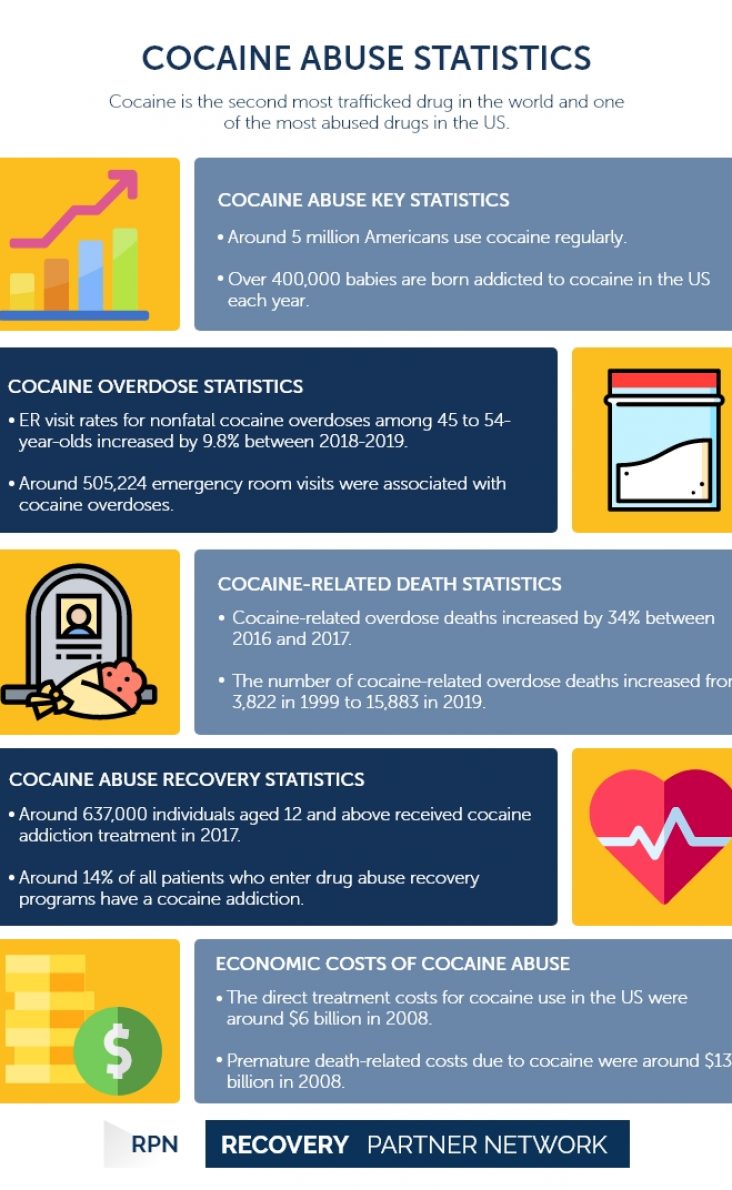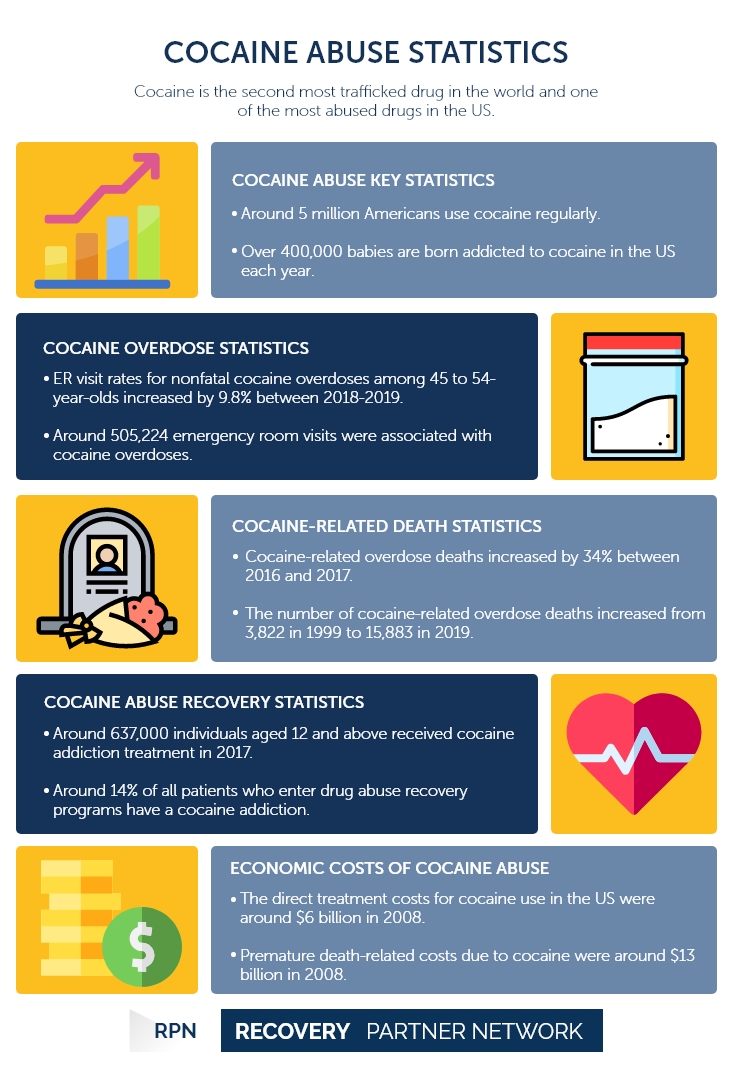Cocaine is the second most trafficked drug in the world and one of the most abused drugs in the US.
Cocaine Abuse Statistics
Substance use disorder
- Alcohol abuse statistics
- Amphetamine abuse statistics
- Cannabis abuse statistics
- Cocaine abuse statistics
- Heroin abuse statistics
- Illicit drug abuse statistics
- Inhalant abuse statistics
- Methamphetamine abuse statistics
- Opioid abuse statistics
- Prescription Drug abuse statistics
- Tobacco abuse statistics
Cocaine abuse statistics | Table of Contents
Cocaine Abuse
Cocaine is an illicit stimulant that reacts with the CNS to generate high levels of energy and
euphoria. Also known as coke, blow, or powder, cocaine is most often available in the form of
powder and crystal that is is snorted, smoked, or dissolved in water and injected. Any use of
cocaine is regarded as abuse as it is an illegal substance that can cause complications such as
organ failure, mental disorders, and respiratory failure.
Cocaine abuse has steadily increased in the past few decades. Despite its illegal standing, many
individuals continue to experiment with or use cocaine due to its euphoria and highly addictive
nature. According to the National Survey on Drug Use and Health (NSDUH), cocaine use has
remained relatively stable since 2009.
Cocaine Abuse Key Statistics
- According to studies, around 1800 individuals experiment with cocaine for the first time
every day. - Around 5 million Americans use cocaine regularly.
- In 2017, about 2.2 million Americans admitted to using cocaine at least once the
previous month. - In 2018, about 4 percent of 12 th graders admitted to using cocaine at least once in their
lifetimes. - Cocaine use is reportedly high in Americans between the ages of 18 to 25 than any other
age group. - About 1 million Americans aged 12 and above used cocaine for the first time in 2012.
- More than 400,000 babies are born addicted to cocaine in the US each year.
- According to the NSDUH, about 913,000 Americans in 2014 met the DSM criteria for
dependence or abuse of cocaine during the past 12 months.
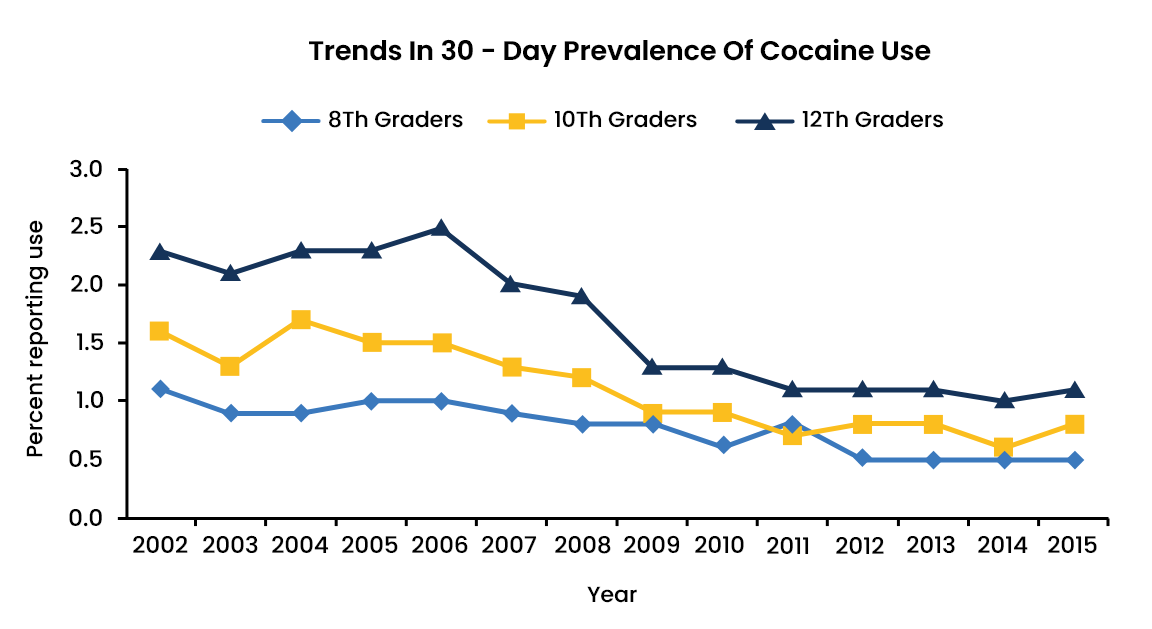
Cocaine Overdose Statistics
One of the immediate dangers associated with cocaine abuse is an overdose. Nonfatal
overdoses caused by cocaine can have a significant impact on an individual’s physical health.
From 2016 to 2017, ER visits due to nonfatal overdoses for all drugs, including cocaine,
increased significantly.
- In 2017, a total of 967,615 nonfatal drug overdoses were treated in ER globally.
- Cocaine-related overdoses were reportedly high among Hispanic and non-Hispanic
blacks between 2016 and 2017 in the US. - According to the Drug Abuse Warning Network (DAWN), around 505,224 emergency
room visits (40.3 percent of all drug-related visits) were associated with cocaine
overdoses in 2011. - The rate of emergency room visits for nonfatal cases of cocaine overdoses among 45 to
54-year-olds increased by 9.8 percent between 2018 to 2019. - In the United States, the rate of emergency room visits for nonfatal cocaine overdoses
among males increased from 11.5 per 100,000 population in 2016 to 15.2 per 100,000
population in 2017.
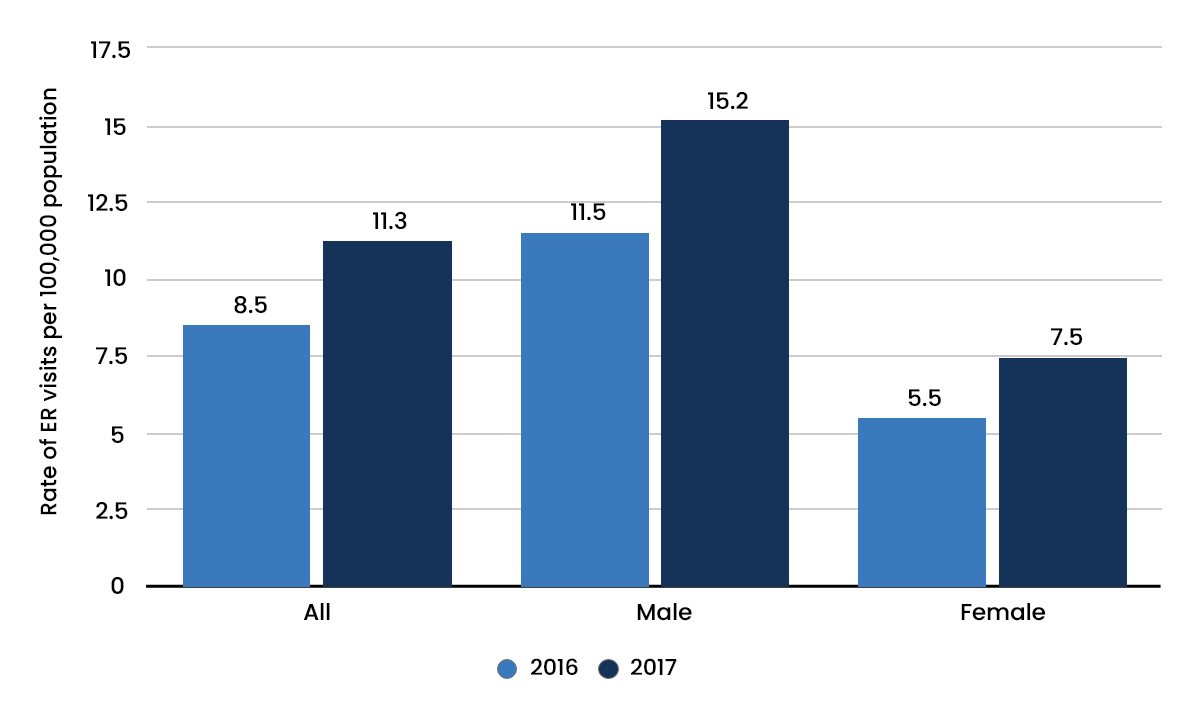
Cocaine-Related Death Statistics
Cocaine overdoses are fatal in most instances. Without the necessary medical intervention, the
complications of a cocaine overdose can worsen and eventually lead to death. Fatal overdoses
remain high in the United States, and, in certain populations, fatal cocaine overdoses
outnumber that of heroin and opiate.
- Cocaine was involved in 1 out of every five overdose deaths in 2017.
- Cocaine-related overdose deaths escalated by 34 percent between 2016 and 2017.
- According to the Centers for Disease Control and Prevention (CDC), the number of
cocaine-related overdose deaths rose from 3,822 in 1999 to 15,883 in 2019. - The cocaine-related death rate soared by 52.4 percent from 2015 to 2016. This increase
was observed across all demographics, urbanization levels, and states, and DC.
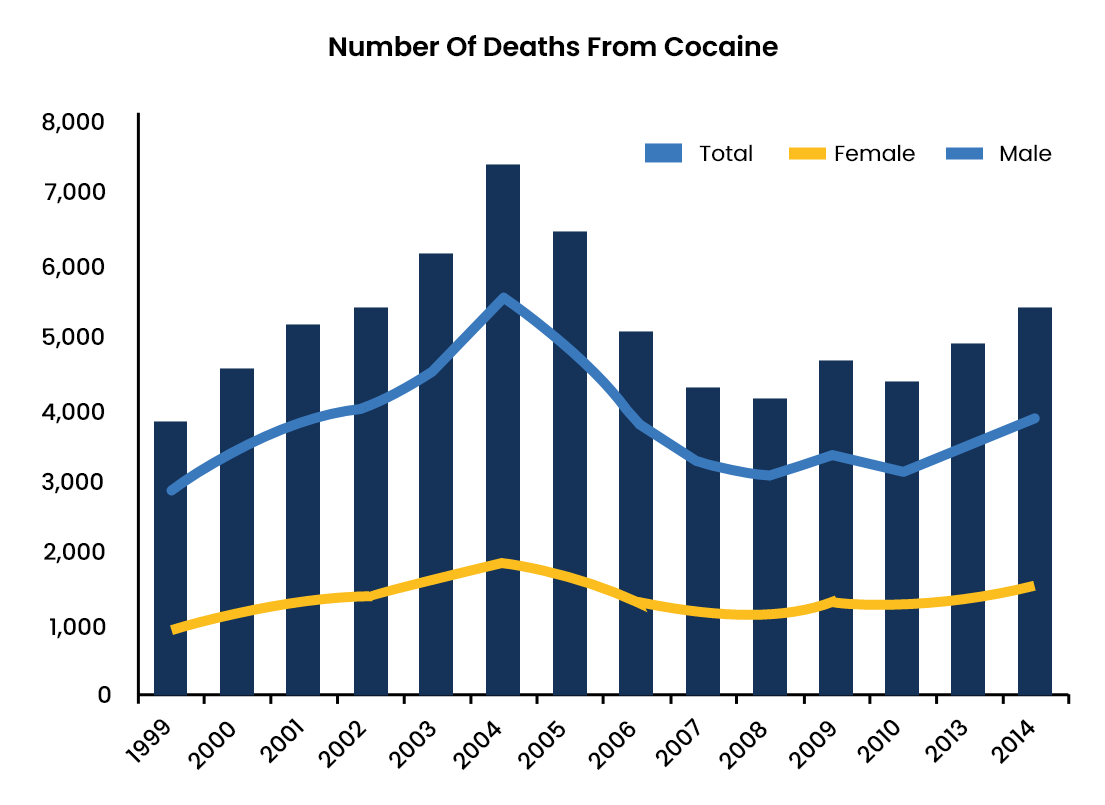
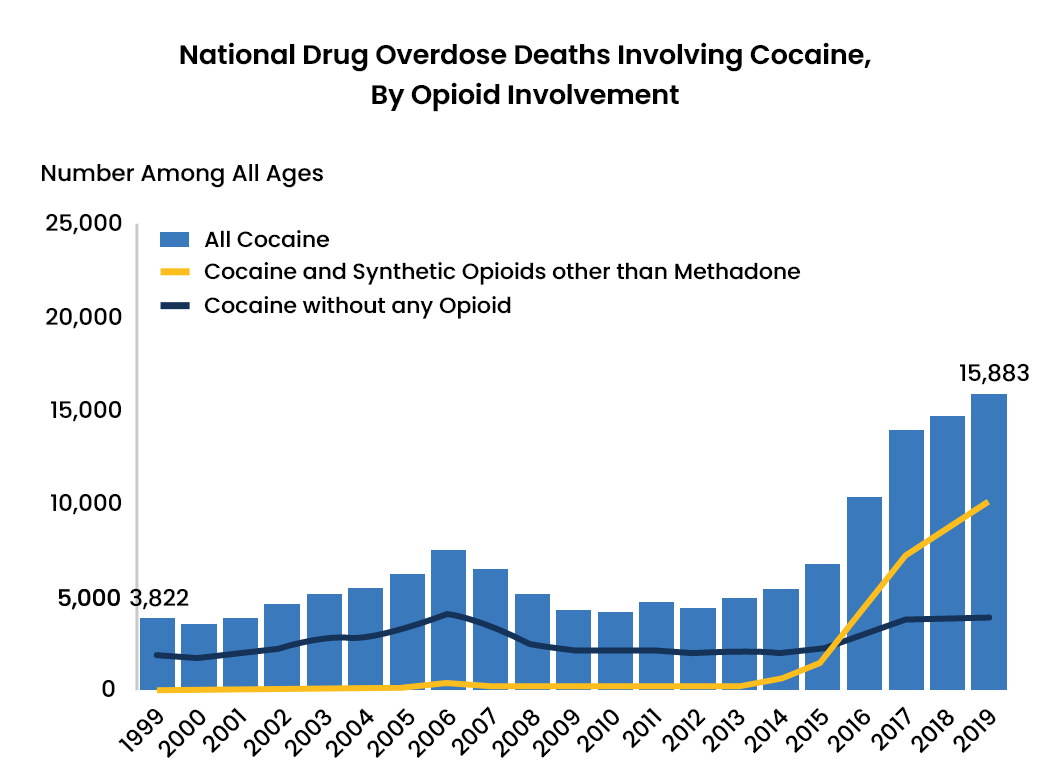
Cocaine Abuse Recovery Statistics
Recent studies suggest that around 40 million Americans age 12 and over meet the clinical
criteria for addiction. That’s more Americans than those diagnosed with heart disease, cancer,
or diabetes.
- In 2017, around 637,000 individuals aged 12 and above received treatment for cocaine
addiction. - According to the data derived from the Substance Abuse and Mental Health Services
Administration (SAMHSA) and National Survey on Drug Use and Health (NSDUH), only
around 33 percent of cocaine users received specialty treatment for cocaine addiction in
2012. - Adolescent treatment admissions for cocaine abuse remained between 2 to 3 percent
between 2002 to 2008 but fell to 1 percent at the beginning of 2009. - Around 14 percent of all patients who check into drug abuse recovery programs suffer
from cocaine addiction.
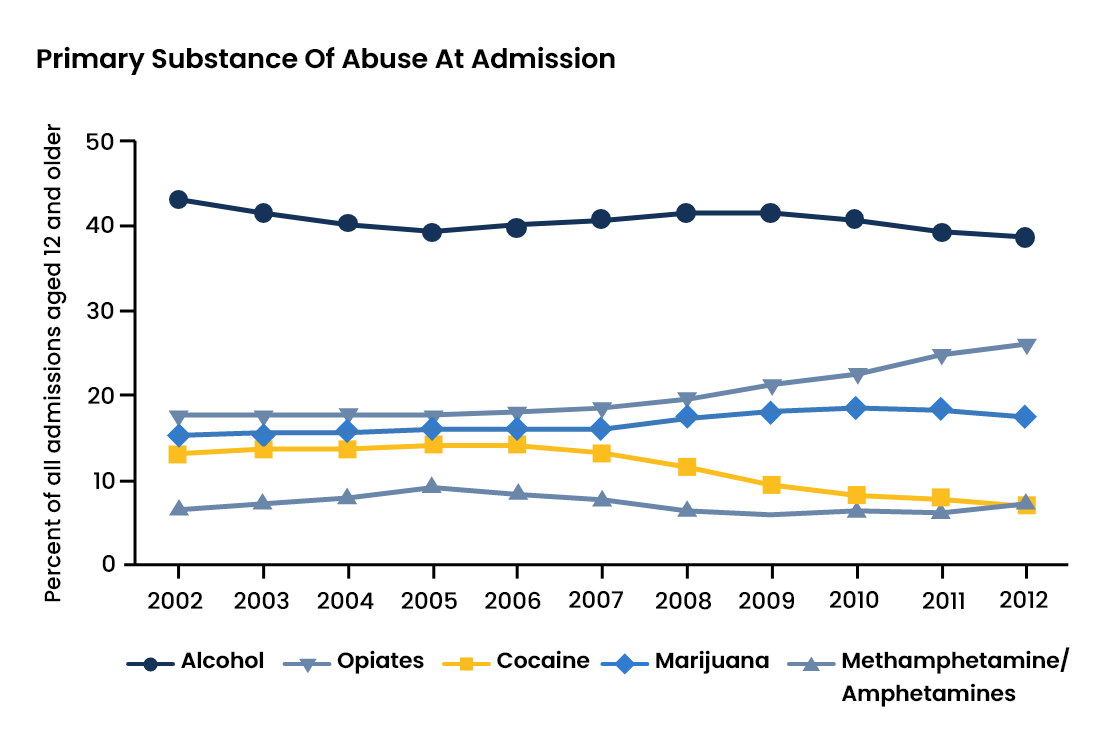
Economic Costs of Cocaine Abuse
Cocaine abuse inflicts enormous financial and social costs on an economy. Apart from
premature deaths due to overdose, cocaine abuse also costs the US economy billions of dollars
in loss of productivity, incarceration, hospitalization, and treatment.
- According to the United Nations Office on Drugs and Crime (UNODC), the direct cost of
treatment for cocaine use in the US was around $6 billion in 2008. - The cost of premature deaths due to cocaine was estimated to be around $13 billion in 2008.
- The prevalence of cocaine use is reported to have a significant influence on the crime and
violence rate in the US. According to the UNOODC, the decline in cocaine use between 1990 to
2008 has led to a decrease in crimes and violence in the US between that period. - Cocaine use contributes to the $11 billion in healthcare costs and $193 billion in overall
costs in the US. - According to the DEA, in 2004 alone illegal cocaine activity accounted for over 12,000
federal drug busts. - Research indicates that Americans spent around $28.3 billion on cocaine in 2010 and
$24 billion in 2016.
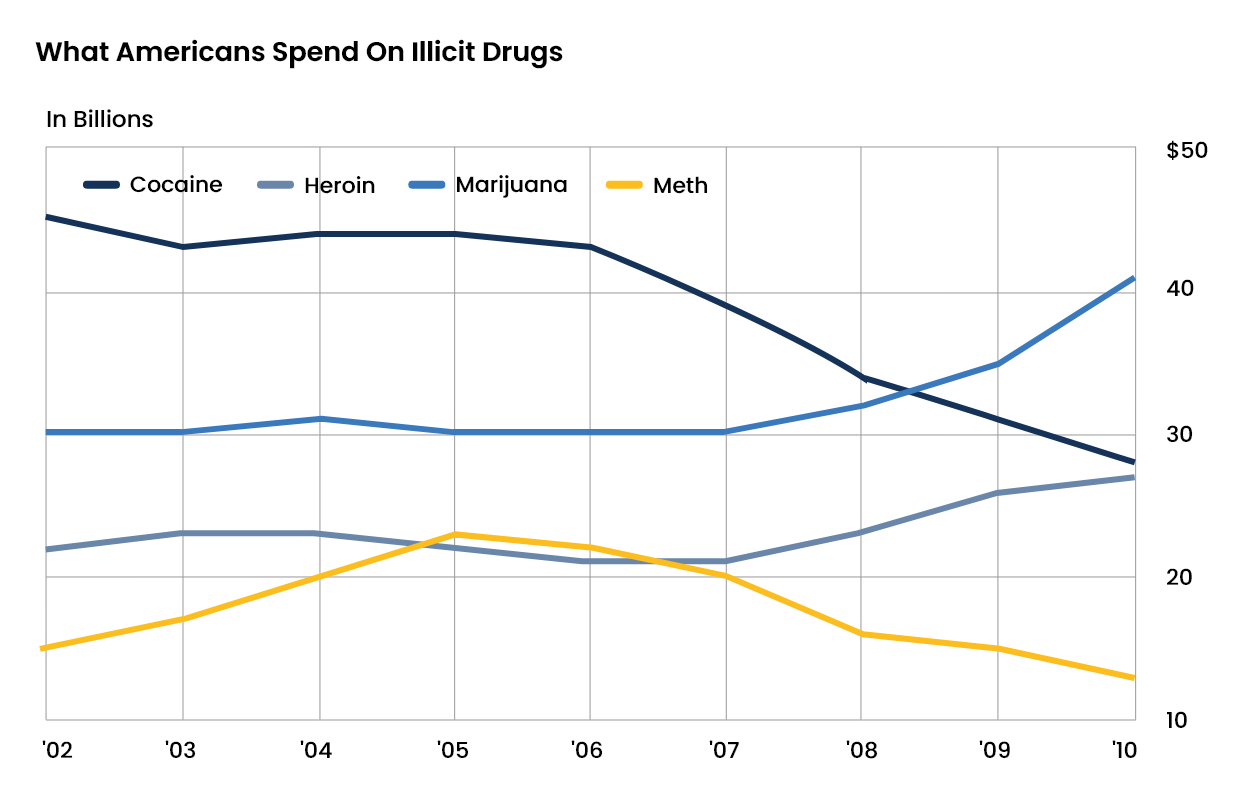
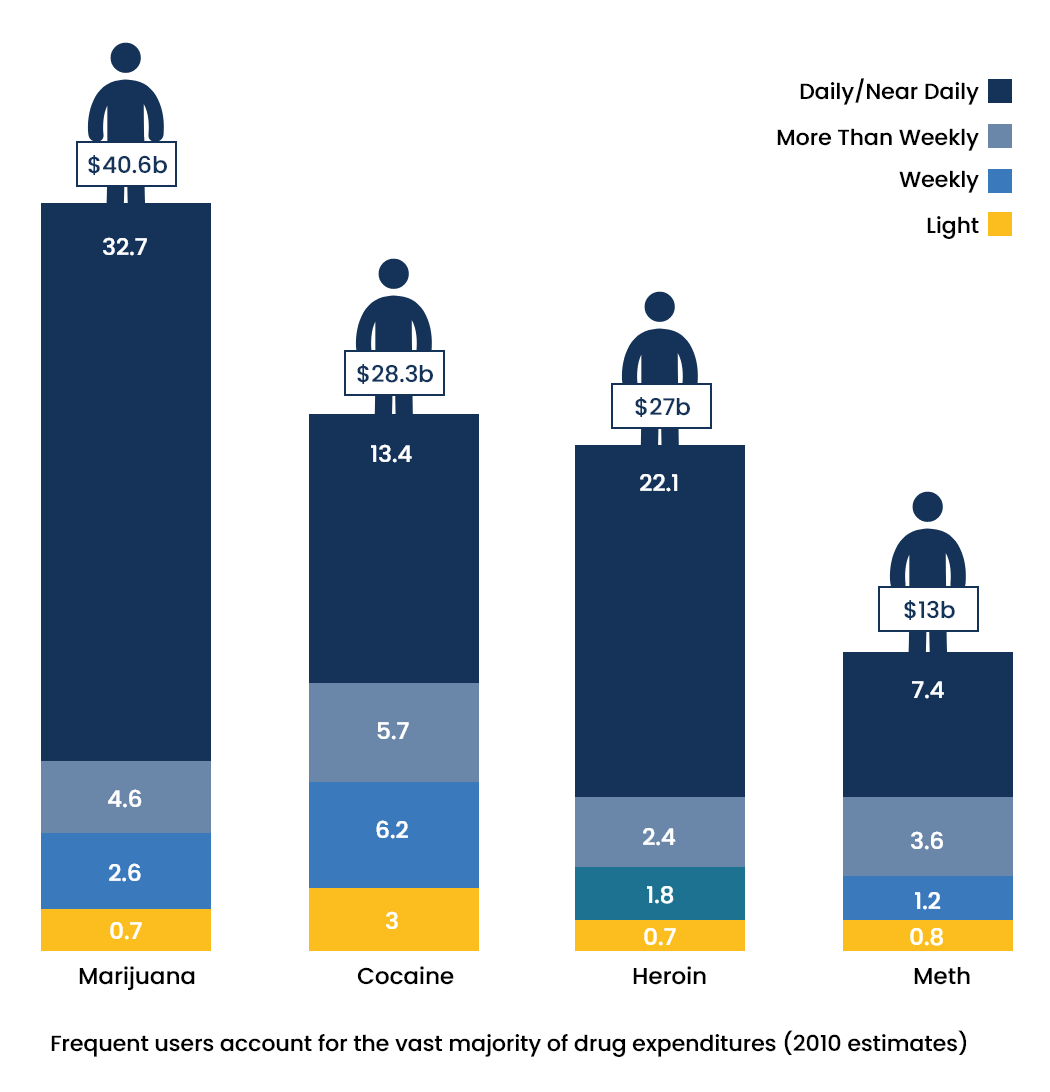
Recovery Partner Network
We aim to educate and empower. If you feel our library of resources does not cover your specific need, reach out to us, and we would be happy to help.
STATISTICS
© Copyright 2026

